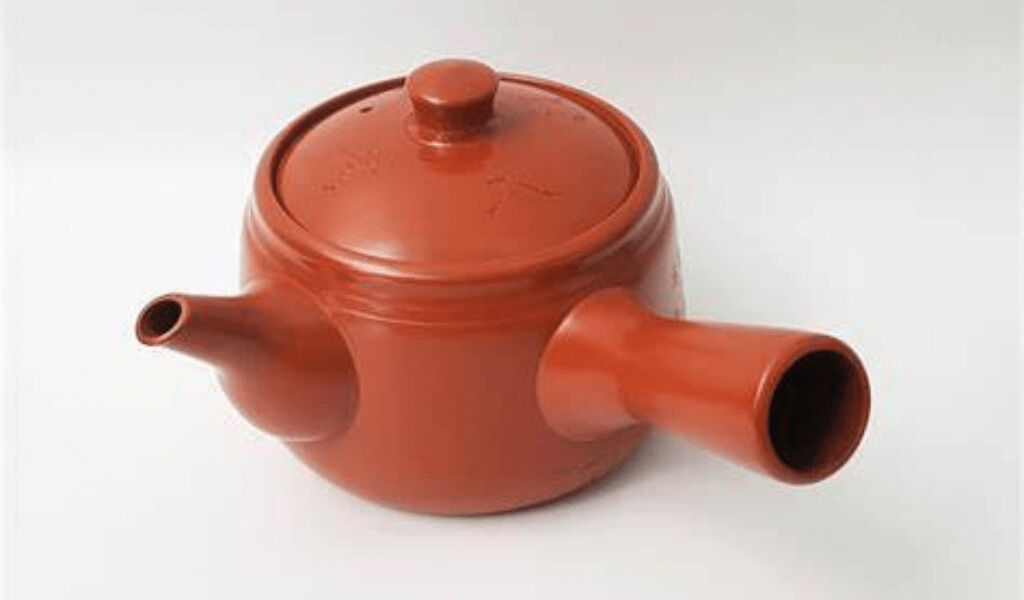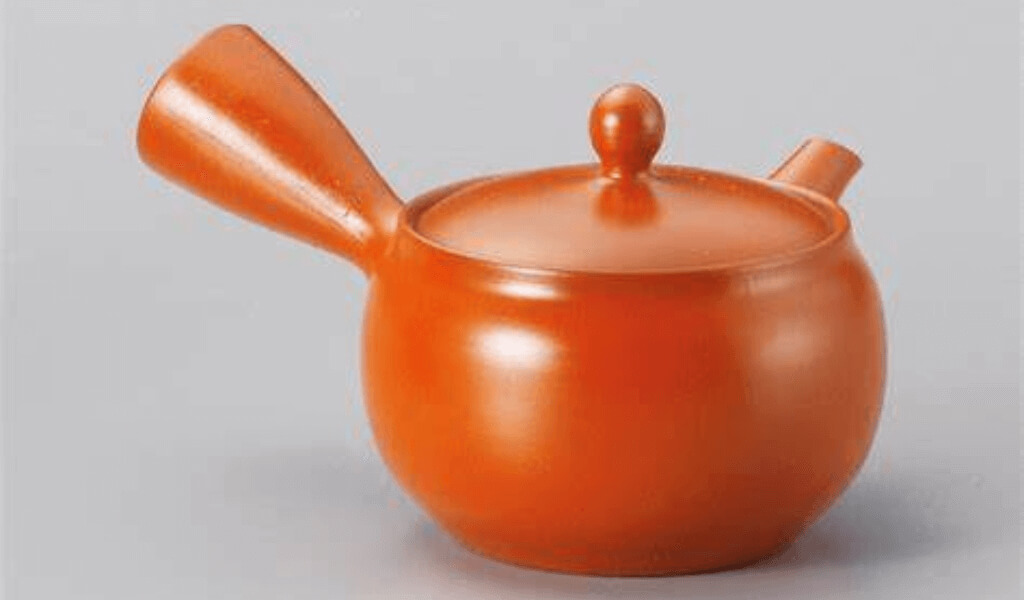Have you ever wondered about the pleasure of brewing tea in a traditional Japanese teapot? If so, you’re in for a treat. Today, I want to introduce you to the Youtobi Japanese Kyusu Tokoname Clay Teapot. It’s not just a teapot; it’s a piece of art steeped in history and culture.
As a tea enthusiast and a blogger, I’ve encountered many teapots. But the Youtobi Japanese Kyusu stands out. It’s handcrafted, made of clay, and hails straight from Japan. Its charm lies in its simplicity and functionality, enriched by the mastery of traditional Japanese craftsmanship.
What makes this teapot so special?
- For one, it has a built-in ceramic mesh filter, an ingenious feature that keeps your tea clear of stray leaves. The filter is made from the same clay as the teapot, adding to its aesthetic appeal.
- During our Tuesday tea ceremony, we observed that the teapot’s clay design improved the tea flavor over time, thanks to its ability to absorb and enrich taste.
These are the two main reasons the Youtobi Japanese Kyusu Tokoname Clay Teapot made it to the top of Shanna team’s “teapots reviews” list.
Master Tamamitsu, hailing from Tokoname, Japan, expertly creates this exquisite teapot. It embodies the region’s distinct pottery finesse, exuding unmatched elegance. Its user-friendly design includes a comfortable handle and spill-free pouring, ensuring effortless use.
Now, let’s dive deeper into this great teapot’s history and intricate details. It’s not just about brewing tea; it’s about experiencing a part of Japanese culture. And trust me, it’s a journey you’ll enjoy.
Read More: Elegant and Functional: Discover Your nice Teapot
Product Specification: Youtobi Japanese Kyusu Tokoname Clay Teapot
Material and Capacity
Ever held a teapot that felt perfect? That’s what I experienced with the Youtobi Japanese Kyusu Tokoname Clay Teapot. Master Tamamitsu’s skillful selection of pottery material gives it a comforting weight. With a 9.46 fl.oz. capacity, it’s ideal for sharing a relaxing cup of Sencha or Hojicha.
Origin and Craftsmanship
Remember the charm of locally crafted items you discovered during your travels? The Youtobi Japanese Kyusu brings that charm right to your kitchen. It’s hand-crafted by Master Tamamitsu, a craftsman from Tokoname, Japan, a region known for high-quality, artistic pottery.
Each teapot carries the soul of its maker, a living testament to a centuries-old tradition. The finesse of Master Tamamitsu’s work is evident in the teapot’s design and functionality, something I appreciate every time I brew my tea.
Design Details
Have you ever encountered a captivatingly simple teapot design? This one combines pleasing shapes with stunning kiln effects, creating an earthy, unglazed surface reminiscent of Japanese landscapes.
But it’s not just about looks. The teapot’s thin walls ensure your tea cools quickly to the perfect temperature, and its drip-free pouring and comfortable handle make serving tea a joy. No more worrying about spills when guests are around!
So there you have it – a combination of elegant design and practical features. And as we delve deeper into Tokoname pottery, you’ll see why this teapot is a must-have for any tea lover.
The History of Youtobi Japanese Kyusu Tokoname Clay Teapot
Introduction to the Edo Period and its significance
Have you ever been intrigued by the history behind the objects you use? This curiosity led me to explore the origins of the Youtobi Japanese Kyusu Tokoname Clay Teapot. And let me tell you, it’s fascinating. It takes us back to the Edo Period in Japan (1603-1867), when art and culture flourished, and unique pottery forms were born.
I remember my trip to Japan a few years ago when I visited an exhibition showcasing artifacts from the Edo Period. The richness and intricacy of the designs left me stunned. This was when I truly began to appreciate the depth and history of Japanese craftsmanship.
Discussing the evolution of Tokoname pottery from the Edo Period to the present
Tokoname pottery, born during the Edo Period, has evolved significantly over the centuries and retained its unique charm and identity. During a visit to Tokoname City in Japan, I could see first-hand the blend of traditional and contemporary styles in the pottery.
Today’s Tokoname pottery, including our Youtobi Japanese Kyusu teapot, continues to respect the traditional practices while embracing new ideas and designs. This sets it apart – the perfect balance between respecting the past and embracing the future.
Highlighting the unique features that mark a teapot as Tokoname
But what exactly makes a teapot a Tokoname? It’s all in the details. The fine detailing work on the lids, spouts, handles, and thin vessel walls, are instantly recognizable. These exquisite details are not just for show; they pleasure each brewing experience.
Using my Youtobi teapot transports me to last summer’s Kyoto tea ceremony, evoking its serene essence with its exquisite craftsmanship. I deeply admire the Youtobi Japanese Kyusu Tokoname Clay Teapot for its perfect fusion of beauty and utility.
The Art of Tokoname Teapots
Have you ever wondered about the creativity and hard work that goes into making a single teapot? I had the privilege of watching a craftsman during a pottery workshop in Tokoname. Each teapot he shaped carried its unique personality, a bit like us humans.
Master craftsmen like Tamamitsu invest much time and effort into creating each piece. The Youtobi Japanese Kyusu Tokoname Clay Teapot is a testament to that. Each teapot is a unique piece of art, which I deeply appreciate when I brew my tea.
Discussion on how craftsmen achieve different aesthetic effects and textures by combining clays from Seto, Shigaraki, and Iga
Craftsmen blend various clays like tea leaves to craft teapots with diverse colors and textures. Clays from Seto, Shigaraki, and Iga offer distinct qualities, resulting in a stunning collection of teapots that reflect each artist’s unique style. It’s a visual delight, just like the tea is a treat for the taste buds.
Tea Brewing Experience
Discussing the built-in ceramic mesh filter and its effectiveness in preventing tea leaves from entering the teacup
Do you enjoy a smooth, leaf-free tea experience? The built-in ceramic mesh filter in this teapot ensures just that. No stray leaves to interrupt your sip of bliss.
During my tea sessions, I discovered this incredibly useful feature that embodies the perfect blend of functionality and beauty in design – like an essential, seamless filter that goes unnoticed.
As for the Youtobi Japanese Kyusu Tokoname Clay Teapot’s tea, it’s simply delightful. Thanks to its thin walls, the teapot cools rapidly, ensuring the ideal tea-brewing temperature.
Every sip I took had a unique flavor profile, much like a journey through the lush tea gardens of Japan. It makes the tea-drinking experience not just enjoyable but memorable.
The Overall Value of the Youtobi Japanese Kyusu Tokoname Clay Teapot
Discussing the value of this teapot as a work of art and a practical tea-steeping vessel
So, is the Youtobi Japanese Kyusu Tokoname Clay Teapot worth it? Absolutely. It is not just a teapot. It is a piece of art, a suitable tea brewing vessel, and a slice of Japanese tradition and craftsmanship rolled into one.
Whether you’re a tea lover, a pottery aficionado, or simply someone who values exceptional craftsmanship, this teapot deserves a place in your collection. Each use is a reminder of its remarkable journey, from Master Tamamitsu’s hands to my kitchen.
As we conclude, consider this: Brewing tea isn’t just about making a drink; it’s a timeless tradition. The Youtobi Japanese Kyusu Tokoname Clay Teapot enhances this tradition with its profound history and masterful artistry.
As a tea enthusiast and a blogger, I can confidently recommend this teapot. Not just for the excellent tea it brews but for the stories it tells.
Thanks from Spiritea Drinks
Read More:
- My Personal Experience: Teabloom Stovetop & Microwave Safe Teapot (40 OZ)
- Chaish Glass Teapot Review: A Delicate Piece of Art for Tea Enthusiasts
- Primula Half Moon Teapot Reviews 2023
- Overview of the GROSCHE Aberdeen PERFECT TEA MAKER
- CUSINIUM Glass Teapot Set: An Extensive Review for the Avid Tea Lover
- The Complete Review of the COSORI Glass Teapot
- Overview of the Porcelain Tea Sets British Royal Series
I’m Shanna, creator of Spiritea Drinks. I’m all about teaching people to grow their own food, tea, cook what they harvest, and eat with the seasons.


